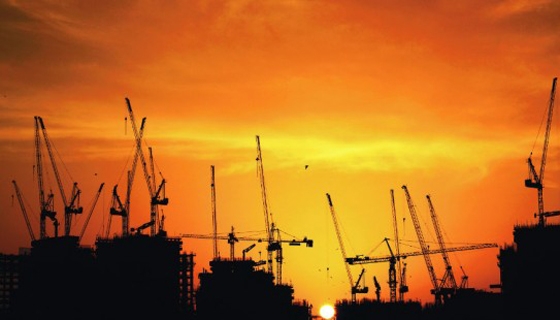Despite global concerns on plunging oil prices, Qatar appears undeterred in its expansion program, forecasting a real GDP growth of 7.7 percent for 2015, according to the latest statistical update released by the Ministry of Developmental Planning and Statistics in mid-December 2014. As the world’s third largest producer of Liquefied Natural Gas (LNG), it is less affected by the prices of cheap oil than its other Gulf counterparts, despite figuring among the world’s top ten producers of oil. It is even likely that at the current oil prices the state budget might break even or even continue generating its vast fiscal surpluses enough to meet any unforeseen deficits in the future.
In the run up to the hosting of the World Cup 2022 and IAAF World Athletics Championship 2019 events, Qatar has unveiled ambitious plans to upgrade infrastructure including, a well-integrated road and rail network comprising, metro rail, roadways, highways and flyovers, upgrades to airports to accommodate the anticipated spurt in tourists and passengers and connecting the venues to the games, which are all situated in and around Doha, the capital city. As work begins on the nine stadia to host prestigious World’s sporting events, a US$ 62 billion budget has been allocated in the 2014-15 budget toward infrastructure, hotels, transport and stadia, and Qatar’s largest infrastructure budget till date has zoomed 16 percent over 2013-14 allocations.
Some of the mega infrastructure projects include the US$ 7 billion New Doha Port project, allocation of US$ 20 billion towards construction of roadways and highways and the biggest of them being the construction of 8 Eco-friendly stadia at an estimated cost of over US$ 32 billion, some of which are being built afresh, while others are to be refurbished. Work has already begun on seven of the eight stadiums scheduled for the World Cup at Lusail, Al Wakrah, Al Khor, Al Rayyan, New Airport, the Khalifa Stadium and the Qatar Foundation Stadium. Transportation is also a cornerstone of the infrastructure upgrade budgeted in 2014, including allocations for the completion of the Hamad International Airport, which is now completed and operational contributing to the new increased influx of population in the run up to the World Cup 2022 event, the New Doha Port, rail, metro and road projects already planned for.
Social infrastructure such as education and healthcare have also found significant allocations in the country’s budgets to ensure that Qatar upgrades in every sphere to raise the standards of living of its citizens in accordance with its Vision 2030 and the National Development Strategy (2011 -2016), the medium term plan adopted to achieve the vision and the World Cup 2022 targets.
While construction contracts have been witnessing a steep upward trend from US$ 18.02 billion in 2012 to US$ 37.88 billion in 2014 and estimated to climb further steeply to US$ 48.9 billion in 2015. Strong environmental foundations have also been built in by adopting green codes of construction and environmentally friendly technology in the construction of stadia and other infrastructure to host the World Cup 2022 event.
Based on its vast experience of tracking construction markets across the GCC and MENA region, this Ventures Middle East report the “Qatar Construction Industry-The World Cup 2022 and Beyond” explores how the winning bid for the World Cup among other factors have helped Qatar speed up its developmental plans, which it continues to view as its primary goals of sustainability and improvements in standards of living of its masses. It explores what factors shape the growth of this dynamically growing industry through an analysis of the Political, Social, Economic, Technological, Legal and Regulatory and Environmental factors that also act as the key market growth drivers and restraints with the help of a probability-impact matrix, to its achieving its full potential.
The report also provides an individual analysis of the key sectors of the Qatar construction industry namely, building construction, infrastructure, oil and gas, power and water desalination and industrial sectors are analyzed individually highlighting the main opportunities and challenges faced by each sector in its race toward growth along with vital statistics on the market size and contracts awarded across the industry and its core sectors along with estimates and forecasts till 2015.
Ventures Middle East
11 February

























































